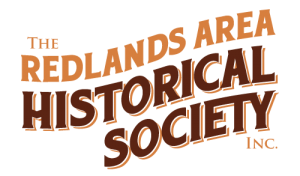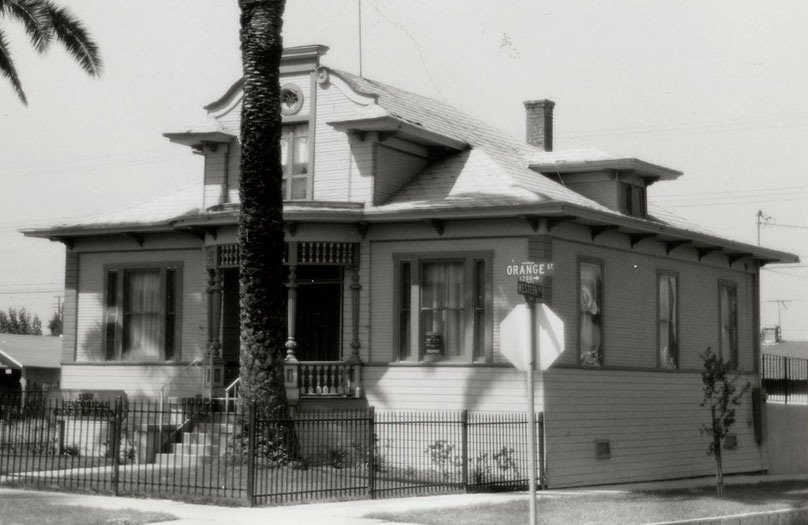1995 HERITAGE AWARD RECIPIENT
The Redlands Area Historical Society, Inc.
Heritage Award 1995
Jerome E. Seymour Cottage
1157 Orange Street
1905
This one-story Victorian cottage is square in shape, with clapboard siding on the top half of the building, and shiplap under the windows, to the ground. Shiplap is also on the building corners giving it a quoin effect. The roof design is a low hip and it projects with decorative brackets and plain frieze below.
Jerome Seymour purchased Lot Six of the Olive Grove Tract around 1903 Assessment rolls show that the property was used for lumber and machinery an listed only land value until 1906. June 1, 1905 lists a J.E. Seymour, owner and builder for a dwelling at the cost of $1000, location Orange street.
Quoting from his obituaries of June 2 and June 3, 1916: Jerome E Seymour was born at Bainbridge, N.Y., February 26, 1910. He came west in 1886, his first stop being at San Bernardino, where he served as a bookkeeper for the West Coast Lumber Company. In 1887, he moved to Redlands and with J Bishop started the Redlands Planing mill at the corner of Fifth street and Stuart Avenue. In 1888, his brother H.L. Seymour, ex-Senator of Highland joined him in business and for twenty-six years they operated the mill under the name of Seymour Brothers. Mr. Seymour served throughout the Civil War enlisting in 1861 in the first call in Company “A”, New York State volunteers. When his time was up he re-enlisted and was honorably discharged at the close of the war in 1865. He was a member of Bear Valley Post, Grand Army of the Republic. He is survived by his wife (Martha Newman Seymour), one son, Carl, of Redlands, and one daughter Mrs. Frank Cryer of Santa Ana.
The Seymour Brothers Mill was responsible for most of the elaborate Victorian wood-cut styles and bargeboard decorations. Their mill provided the only lathe work for our early structures. The Seymour Mill was so popular in the building boom of 1890 through 1893, the two brothers operated the mill twenty-four hours a day. Upon Jerome’s death after a long illness, Howard decided to sell the mill to Louis Fletcher in 1914.
Some very distinctive features of this home are: A large decorative shiplap dormer with a round wooden vent in a floral design at the top. Below the dormer, the roof line extends out in a semicircle forming the roof of the portico. The top of the portico is turned spindle work and is supported by four decorative columns, two attached to the building’s surface. The inside of the portico is shiplap and the balustrade is of turned spindles. The centered front door has a diamond transom above and slender side lights. Three smaller dormers face south, north and west.
The home remained in the Seymour family until 1977, upon the death of their daughter, Mrs.Emma Cryer. In 1983, Darlene Huckabee purchased the home and converted it, for $14,000, into the Historical Glass Museum.
The Redlands Area Historical Society is pleased to present this Heritage Award to the Historical Glass Museum.


